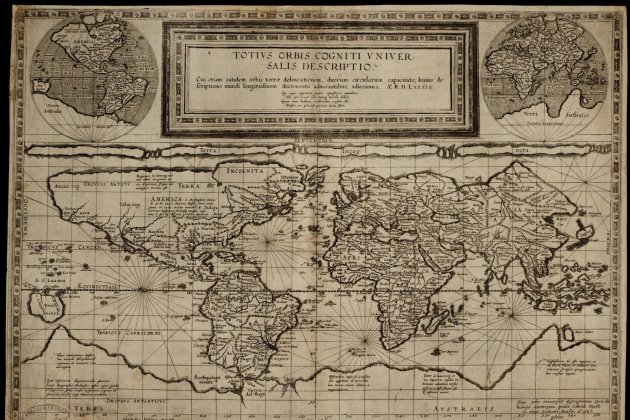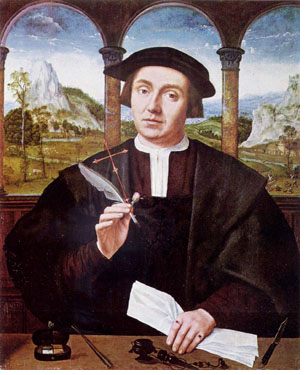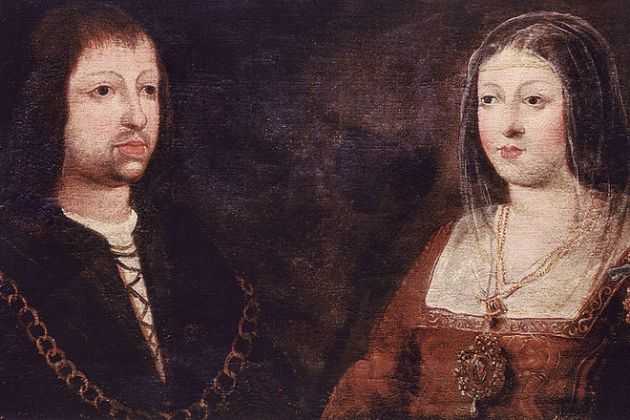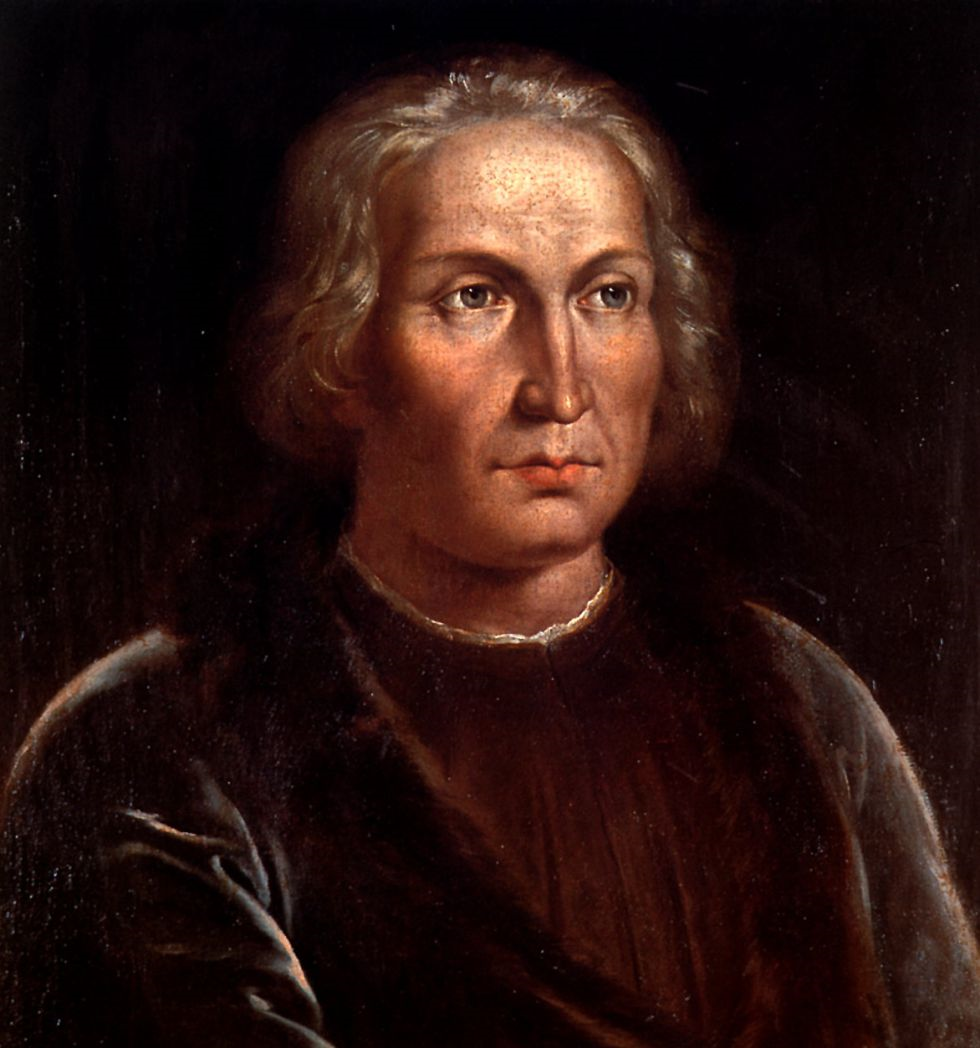Myth has it that Isabel of Castile —the Catholic Queen— swore she would not change her shirt until the Christian armies had driven a cross into the ground in Granada’s Alhambra held by the Moors. What it does not tell is that the cross went at the pace of a procession. It took them 7 years to cover the route between Ronda —the first great stronghold to change hands— and the Patio of the Lions—the garden in the royal Nasrid palace. A long wait that not even a burlap shirt would last out. A myth, which far from praising the determination of the Monarch, describes —in our eyes— very censurable habits in terms of hygiene. The myth also has it that Queen Isabel pawned her jewels to equip the three ships for Columbus’ first voyage. But it does not tell that the Castilian’s ornaments had been squandered years before to pay for the weaponry and the civil war that had had her enthroned. A myth that far from making her a visionary, reveals —again to our eyes— that she had habits of consumption that were, at the very least, debatable.

Orbis terrarum' of 1589
Myths aside, the story —the real one, and not that of Spanish nationalist doctrine— reveals that the money for the American enterprise came out of Valencia. A detail that should not surprise. Firstly, because at the end of the 1400s Valencia was the true economic and cultural capital of the Crown of Aragon. It was in fact even that of the whole Peninsula. And secondly, because Valencia was the residence of the Santàngel family, the bankers of the Catalan-Aragonese monarchy. Lluís de Santàngel —the elder— was Valencian and the son of converted Jews, and had a close relationship —one based on powerful economic interests— with Kings Alphons and John, the uncle and father of Ferdinand the Catholic. Santángel's son —also Lluís— followed the family tradition and served as the banker to the Catholic Monarchs Ferdinand and Isabel. And he was also Columbus' patron, with whom he was united in a friendship dating back one, or probably two generations.

Lluís de Santàngel
SANTÀNGEL, THE FINANCIER
In the Albereda in Valencia, at one end of the Pla del Real district, there is a small monument to Lluís de Santàngel the younger —inaugurated in 1920 at the initiative of the cultural association Lo Rat Penat— bearing the legend: “Generous cooperator in the discovery of America.” A curious —and surprising— inscription that does not match Santàngel's financial effort. Historiographic sources reveal that he financed the whole of the royal contribution (that of Ferdinand and Isabel): 8 million sous—equivalent to 20 mansion houses in Valencia. Three quarters of the whole investment in the enterprise. Almost all of his fortune, and without interest. Santàngel was not just the moneybags. He was also the link uniting Columbus with the Monarchs—in the plural and in all senses— bringing Columbus to the Court. A relationship of patronage that Columbus was always thankful for, and which is patent when, upon return from his first voyage, one of the three letters he writes —and he does so in Catalan— address Santàngel.
TORRES, EL POLTICIAN
On his second voyage —that of conquest— Columbus orders the construction of La Isabela —on the island of Hispaniola— the first colonial city in America. Following the monarchs’ instructions, he appoints Antonio de Torres as the first mayor of the city. Torres is recorded everywhere as a high-ranking Portuguese official at the service of Queen Isabel. A detail that seems, a priori, contradictory, because in the Castilian civil war the Portuguese faction at the court sided with Juana—Isabel’s rival to the throne. Recent research identifies Torres as a very important character in Valencia’s ruling class; closely associated with the Santàngels —and Columbus— and who had for some time been the go-between with the chancelleries of Ferdinand and Isabel. This hypothesis has gained support, as we now know that both Ferdinand and Isabel surrounded themselves with each of their own, those who had proven loyal to their respective interests.
BOÏL AND PANÉ, THE ECCLESIASTICS
On his second voyage, Columbus also took a couple of apostles under his wing to evangelise —and westernise— the natives of the Indies. Bernat Boïl, an influential clergyman born in Saidí in the Baix Cinca and raised in Lleida, had been appointed as an apostolic vicar of the Indies, a kind of bishop, at the proposal of the archbishop of Tarragona —a member of Ferdinand’s chancellery— and ratified by Pope Alexander VI. The Borgia pontiff was from Xàtiva —the Valencian connection— and a personal friend and ally of Ferdinand's in his political projects. Boïl formed a tandem with Pané, a cleric credited with being the first European to learn the language of the indigenous peoples. The sources do not mention the specific origin of Pané, but Catalan records —the fogatges hearth or chimney tax— of 1495 show his family name as being common in the north of the diocese of Tarragona—currently in the south of the plain of Lleida.

Ferdinand & Isabel, the Catholic Monarchs
BERTRAN AND BALLESTER, THE MILITARY CONTINGENT
Bertran and Ballester, who were prominent figures in the second voyage, left their personal mark in the form of abuse and ill-treatment of the indigenous population. Pere Bertran-Margarit was an old friend of King Ferdinand, a brother-in-arms —and other unspeakable activities— in the war on Granada. He was a native of the Empordà region, like Vilamarí, the admiral of the Aragonese navy, who in turn had been Bernat Boïl’s patron. The Empordà connection. He was the governor of the fortress of San Tomás on Hispaniola. On the other hand, Miquel Ballester from Tarragona exercised a more refined brutality: he was the introducer of the treading technique to separate sugar from cane, used exclusively in Gandia, the original bailiwick of the Borgias. Once again, the Valencian connection. Ballester, who was close to Columbus, extended sugar-cane farming and subjected the population to colonial exploitation. He served as governor of Santo Domingo, the capital.
THE CATALAN COMPLEX
Ferdinand the Catholic, Columbus, Santàngel, Torres, Boïl, Pané, Bertran and Ballester are just some examples of the many sides to the Catalan complex of the conquest and colonisation of America. The Catalans also took an eminent part —at least initially— in the system of domination, acculturation and extraction of resources from the Americas. As did almost all European nations. Spanish historiography —dominated by a covetous, rancid and often ridiculously hilarious nationalism— has hidden the role of the Catalans in the American enterprise for centuries, as well as the responsibility of the Catalans in the exploitation, the rape and the genocide of the native American nations. Our story cannot be built on myths. No burlap shirts nor rosaries pawned. Knowledge —the begetter of freedom— is present so we can accept our history —and our responsibility— with its errors and accomplishments. With its ups and downs. In a critical spirit. The Catalans of Columbus.

